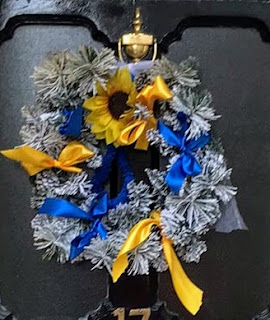Are You Loosing It?
Bad Balance
Our ability to balance is beginning to fade away. Not just for senior citizens but even in the young. Falls leading to death or serious injury are on the rise, and most of the time people falling over are sober, and doing nothing more complicated than standing or walking.
Our balance is part of a complex brain and body interaction.. Humans are the only species on earth that use two legs to walk as their main mode of transport, Our bodies, when standing, are top heavy with a tiny base of support. Our centre of gravity is around our pelvis and slightly forward of our ankles. We have to balance the weight of our heads and moving chests on this base.
When in good health, we manage to balance by using a vast brain and body network of information from our muscles, eyes, and inner ear. This then informs our legs muscles to make the necessary adjustment to posture and keep us balanced.
Anxiety, depression and other mental health disorders and even the medicines that you take, can affect how you stand and walk..
Working to improve your balance could improve your mental health too.
Viewed in slow motion we lurch from side to side but the brain makes adjustments to make micro-adjustments mid stride. You have probably seen films showing a drunken person swaying from side to side.
We may face problems like uneven ground, ear problems, weaker muscles or greater speed, which can make it more difficult to keep upright, and can turn a wobble, into a fall.
Illness, injuries, inflammation, obesity, stress, anxiety, depression and infections can change balance and the way we stand. They can affect the way we walk and potentially increase the risk of falling.
When balance is tested by standing on one leg with eyes open, or closed, it reveals that our balance begins to decline in our 20's or 30's. By midlife there is an increase in the likelihood of serious falls. Fatal falls in the USA aged between 45 and 65 increased by 44% between 1999 and 2007.
If we could turn off all the muscles in our legs when we were standing we would fall.
All the information that keeps us balanced is sent from the small part at the bottom of the brain, called the cerebellum. It has the most neurons, and has increased in size as our ancestors began walking on two feet.
The cerebellum is a superfast computer that remembers past actions and can make predictions, and send the information to the neurons that control muscles.
Why are more people in the world falling?
The first problem is that children are not moving enough, Our stability is built up by trial and error as we learn to walk, toddle, stride and run. Too much sitting watching TV, playing video games or on mobile phones means less time walking and running about, playing sports or cycling.
The second problem is not moving enough in our middle years. Again sitting more at work, in cars, on transport, at home. This general lack of fitness leaves the balance system unchallenged and it gets weaker every day. Today people in their 40's and 50's have worse balance than 70 and 80 yr olds.
Thirdly as we get older the cerebellum starts to slow down and balance is more difficult..
Use it or lose it !
Luckily, you can take steps to slow or reverse this decline.
Balance training can be as simple as standing on one leg, sitting on a balance ball, or practicing walking heel to toe along a line on the floor. The more you do balance training the greater the improvement.
Take the balance test.
Stand on one leg, with eyes closed. If you cannot do it for at least 30 seconds you need to start balance training as a priority.
Balance training needs head moving and eyes open. Not slow movements like yoga and meditation. The ears, eyes and muscles need to be used.
Practice walking sideways. like a crab, crossing your feet as you do so.
Stand on one leg with your eyes open. for half a minute or one minute
Look out of the window while standing on tip toes for half or one minute
Walk a line on the floor, with your arms out sideways, to help you balance
Rock forward and backward on your feet.
Do foot strengthening exercises, try and pick up a pencil with your toes.
Turn each foot up and down, side to side
Walk on your heels
Walk on your toes
Give it a try, we don't want any more falls at Awaas.
My dear Lonavala friends,
You can see from the photo that to work on my computer I sit on a large ball. It moves slightly with me and so I am continually adjusting my balance automatically. Between times I am tempted to bounce gently up and down . I have a nice chair in my kitchen in which I can fall asleep and another with a wobble cushion that keeps my posture upright as i sit on it. When I clean my teeth I stand on tip-toe and I try to do the bed exercises that I gave to most of you last year. I have added one or two more exercises, holding 'weights' which I do in bed as well. Apart from a gentle walk with my daughter's dog, I don't get round to any more exercise. My badminton group is out of bounds to me because of Covid. I hope to do more if I get out to Awaas next year!
Meanwhile keep 2 metres apart if you go to town. Wash your hands frequently. Wear a mask!



Comments
Post a Comment